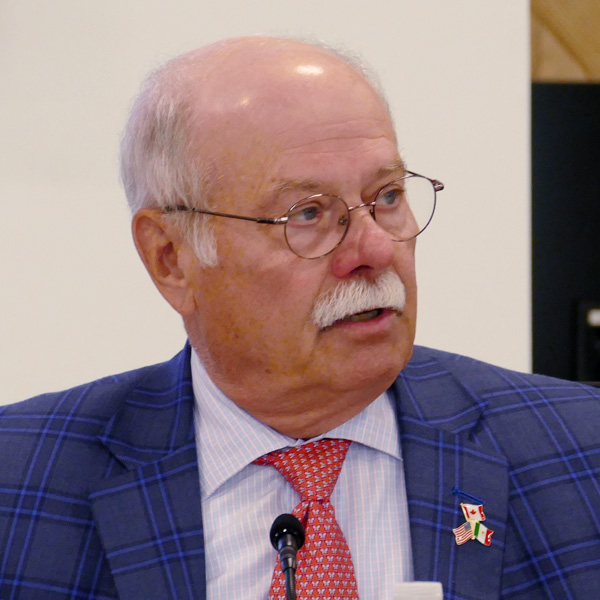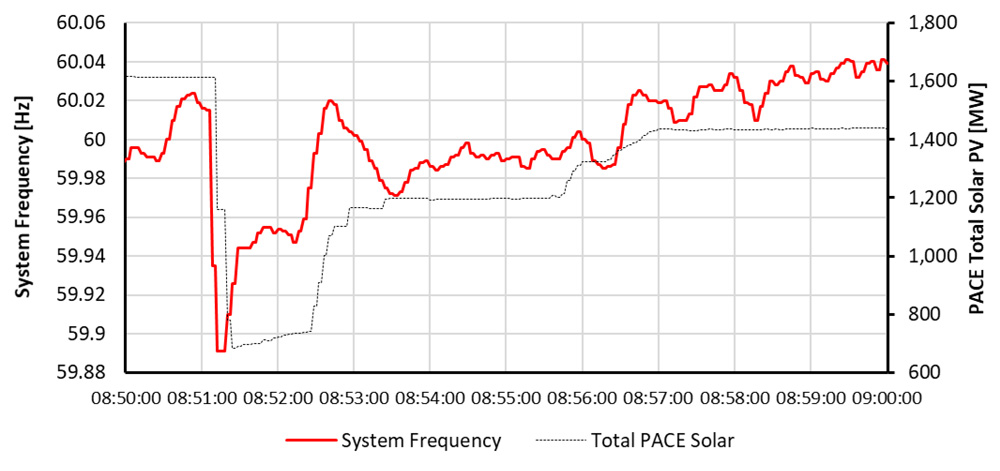LAS VEGAS — CAISO scored a potentially important victory Wednesday when the Balancing Authority of Northern California (BANC) said it will pursue membership in the ISO’s Extended Day-Ahead Market (EDAM) — and not SPP’s Markets+.
BANC General Manager Jim Shetler revealed the decision during a CEO panel discussion at a CAISO EDAM Forum held at Resorts World on the Las Vegas Strip.
“I’m pleased to announce that at our strategic planning session a week ago today, staff recommended to the [BANC] commission that we move forward with participation in EDAM as our option for day-ahead market participation, and I’m pleased to say our commission unanimously endorsed that recommendation,” Shetler told an audience of about 240 electric industry participants attending the event.
BANC is a joint powers authority that manages system operations for six municipal utilities: Sacramento Municipal Utility District (SMUD), Modesto Irrigation District (MID), Roseville Electric, Redding Electric Utility (REU), Trinity Public Utility District (TPUD) and the City of Shasta Lake. With about 5,000 MW of load, BANC is the third-largest BA in California and the 16th largest in the Western Interconnection. Its footprint also includes the Western Area Power Authority’s transmission grid in the Sierra Nevada region (WAPA-SN).
Shetler said each of its members would have to decide individually whether to join the EDAM but pointed out that SMUD — California’s second-largest municipal — also has received approval from its board to engage with BANC on participating in the new day-ahead market. SMUD was the first BANC utility to begin trading in CAISO’s real-time Western Energy Imbalance Market (WEIM) in 2019.
“Engaging with BANC to participate in the EDAM is a natural progression from SMUD’s participation in the WEIM,” SMUD CEO Paul Lau said in a statement. “Not only is the EDAM an important tool to support reliability and resiliency and low rates while helping SMUD deliver on our industry-leading decarbonization goals, it will also provide broader price, reliability and decarbonization benefits in support of regional goals.”
Shetler said Modesto, Roseville and Reading were all in “various stages” of obtaining approval from their boards, while WAPA-SN will be kicking off the federal process to gain its approval in September. He said BANC is looking to go live in the new market in 2026.
BANC is the second entity to commit to the EDAM behind PacifiCorp, which controls a large amount of transmission and generation in six Western states through its Pacific Power and Sierra Pacific utilities.
Sharing the dais with Pacific Power CEO Stefan Bird and CAISO CEO Elliot Mainzer in Las Vegas, Shetler said he looked forward to working with their staffs to “make EDAM a reality.”
‘Clear Winner’
At a press briefing at the forum on Wednesday, Shetler spelled out the reasons BANC decided to go with the EDAM, including its ability to help members meet their decarbonization goals.
“And the other dynamic here is, as markets evolve, if you’re not in a market, you do run the risk of losing your counterparties for trading going forward. That was certainly a decision for some of my members when we joined the WEIM,” he said.
But BANC’s decision to choose the EDAM over Markets+ appeared to come down to geography.
“I think the main driver for any market decision is what are your transmission capabilities and who you’re interconnected with, and we have tremendous interconnection capability with the ISO through our footprint,” he said. “And it just made sense for us when we did our evaluation, both from a cost standpoint [and a] potential benefits standpoint, that EDAM came out as a clear winner.”
Shetler acknowledged the reservations that other public power entities — namely Bonneville Power Administration — have expressed about joining the EDAM, given CAISO’s existing governance structure, in which the grid operator’s board is appointed by the governor of California. That arrangement is a no-go for BPA under federal statute if the power marketing agency were to seek the deeper connection of an RTO.
In kicking off BPA’s day-ahead market selection process in July, Russ Mantifel, BPA director of market initiatives, said the agency would need to factor in that possible limitation when choosing between EDAM and Markets+. (See Regulators Propose New Independent Western RTO.) During Wednesday’s roundtable, BPA Administrator John Hairston reinforced that point.
“When we joined EIM, we were really clear,” Hairston said. “We came out of our public process and said the governance structure was sufficient but wasn’t preferred. The joint authority model [with the CAISO and WEIM boards sharing decisional authority] has worked, but at the end of the day is not independent, and that’s what we’re looking for in this next step.”
Shetler said RTO participation is not currently “an end goal in and of itself” for BANC members, although they do want to leave open the possibility of getting there.
“I think that EDAM could evolve into an RTO if we wanted it to,” he said. “I also think there’s the ability that perhaps an RTO could get created and there might be some of us who want to just stay in EDAM and not participate in an RTO. So, I think that optionality is important to us.”

